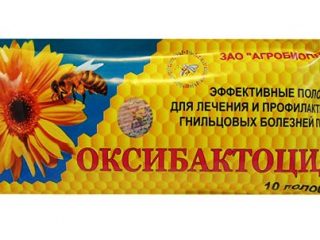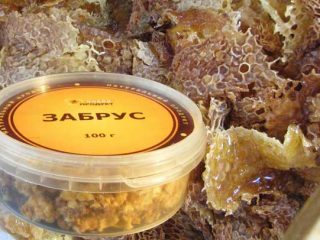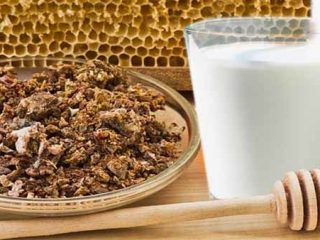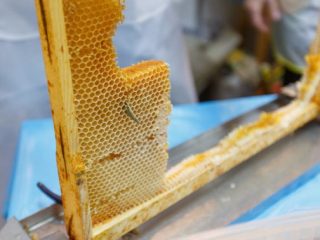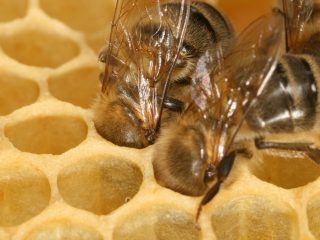Content
Fir oil for bees has a disinfectant, anti-inflammatory and stimulating effect. For this reason, apiary owners are increasingly paying attention to this product, using it to treat bee colonies and prevent diseases. It contains biologically active substances.
Application of fir oil in beekeeping
Fir oil is a natural remedy that has a beneficial effect on the physicochemical properties of the environment and has a positive effect on the health of bees. It purifies the air, neutralizing pollution, and also serves as an antiseptic. It is used to treat diseases, such as varroatosis and acarapidosis, as well as for feeding. The fresh pine aroma inherent in the composition has a beneficial effect on the general condition of bee colonies, and the medicinal substances released with the vapors serve as good means of preventing diseases.
Composition and value
Firs grow in the Far East, China, Korea, Mongolia, some European countries and North America. To obtain oil, needles and young shoots of the plant are used.They are subjected to steam distillation.
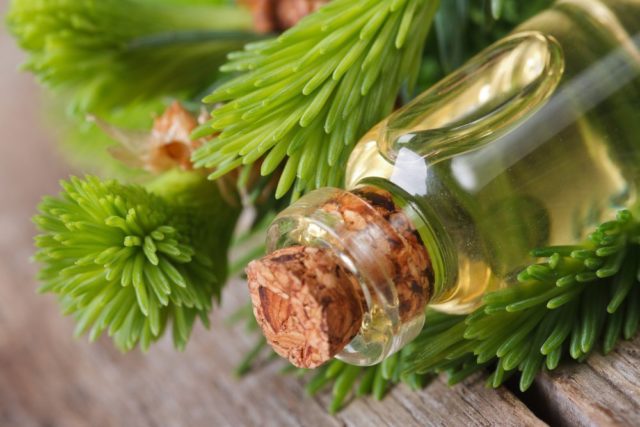
Conifers can grow only in favorable environmental conditions, therefore the quality of raw materials obtained from this crop always remains high
Fir oil is a greenish or yellowish liquid with a pronounced lemon-mint aroma. It contains:
- bisabolene;
- camphene;
- phytoncides;
- cadinene;
- myrcene;
- limonene.
Despite the availability and variety of various drugs on the modern market, essential oils, including fir oil, are in great demand. This is due to its natural origin and many beneficial properties:
- immunostimulating;
- antiseptic;
- anti-inflammatory;
- antiviral;
- pain reliever;
- cleansing.
When is fir oil used to treat bees?
In the Krasnodar region, experts conducted a study, the purpose of which was to monitor the effect of fir oil on the development of bee colonies, as well as the egg production of queens. Gauze swabs soaked in this product were placed on the upper bars of the central frames. They took 1 ml of the substance per street. The procedure was carried out 4 times during April. It turned out that the substance increases the food excitability of the larvae, they grow faster. And the egg production rate of queens increases by an average of 20%. All this leads to the growth of bee colonies, a more intense summer, and increased productivity. Insects produce more honey.
Thus, the use of fir oil for bees helps apiary owners solve several problems at once:
- improve the productivity of bee colonies;
- increase egg laying and brood;
- increase the resistance of bees to diseases;
- improve performance.
Scientists have found that the effect of fir oil begins to manifest itself after the biologically active components included in its composition begin to enter the respiratory system of the bee. In order to prevent diseases, this composition can be enriched with fertilizing.
It is better to use a natural composition. It can be distinguished by its characteristic rich smell.
Treatment of bees with fir oil for acarapidosis
Acarapidosis poses a serious threat to the hive. Insects cannot cope with the disease on their own; they need human help. One of the effective treatment methods is treatment with fir oil.
The causative agent of the disease is the Acarapis woody mite, which lives and reproduces in the respiratory tract of bees, contaminating them with toxic products and causing hemorrhages. This poisons the body, leads to a lack of oxygen, paralysis of the pectoral muscles, which affects the functioning of the wings.
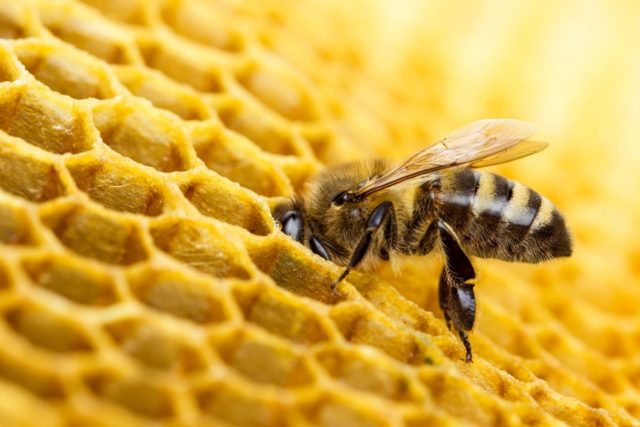
Mites are especially dangerous in cold weather, since infection occurs quickly in a confined space of the hive
Acarapidosis can be treated with fir oil. The tool solves several problems:
- destroys ticks;
- disinfects;
- relieves inflammation;
- improves the general condition of bees.
It is important for beekeepers that fir oil is safe for bees and helps insects no less effectively than drugs. To carry out treatment with a folk remedy made from fir, perform the following steps:
- The nest is carefully wrapped in polyethylene.
- A small hole, about 1 cm, is left in the lower tap hole.
- The upper entrance is covered.
- Take a gauze swab and dip it in fir oil.
- Place it on the central frames, to the upper bars.
- Treatment is carried out 3 times, with an interval of 5 days.
Fir oil against varroatosis of bees
Varroatosis is a disease that occurs as a result of infection of individual individuals, and then entire families and apiaries, with varroa mites. These flat, brown-bodied insects live on the bodies of queen bees, bees and drones. Their source of nutrition is hemolymph. In cases of serious infestation, mites can be seen on dead specimens without magnifying instruments.
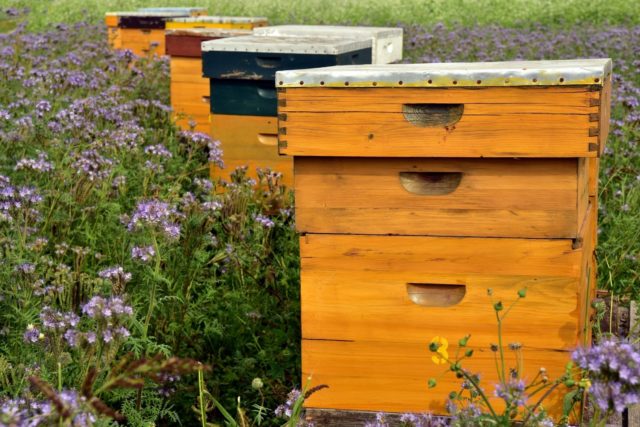
If you suspect a varroa infection, before the spring flight, you need to take 2-3 bees and dead bees for testing in the laboratory.
Signs of disease in bees may include:
- slow development;
- weak, small bees whose wings may be deformed;
- the appearance of undeveloped pupae in the hive;
- the appearance of brownish plaques in adult insects;
- restless behavior of bee colonies in winter.
Fir oil is effective in treating varroatosis. Its wood, needles and cones contain large quantities of phytoncides. These are natural compounds that have anti-acaricidal properties. In addition, phytoncides are known for playing the role of natural antibiotics.
The video demonstrates how to treat bees with fir oil.
Rules for treating bees and hives with fir oil
The hives must be processed correctly. Experienced beekeepers act like this:
- The procedure is carried out in the spring, before the first flight. You can focus on the air temperature, it should exceed +15 degrees.
- Bees are treated at least 2 times, at intervals of 8 to 10 days.
- The same procedures are carried out in the autumn. Their number and intervals are similar.
- Another 2-3 treatments are planned for the summer, in the second half of June.The air temperature should be kept between +15 and +30 degrees.
- They work in the evening, after the flight bees return.
- Take out one or more frames, carefully move the rest apart.
- The drone brood is cut off.
- Place paper on the bottom, which is pre-lubricated with Vaseline. It is changed every morning. The paper collects parasites that have fallen from the bodies of bees.
- Take parchment and spray it with fir oil. Its volume depends on the number of families. Calculate 1-2 ml for each bee colony.
- Turn it over so that the treated layer faces down.
- Place the parchment over the feed frames and cover it on top.
- The entrances are closed for several hours. It is important not to forget to open them on time.
- The soaked sheet is not immediately taken out. Its effect continues for another 3 days. During this time it is placed in the hive.
Fir oil is a folk healing method. But he managed to prove his effectiveness. It has been used in large beekeeping farms since the 1980s. The method is based on reviews of the use of fir oil by old, experienced beekeepers.
Prevention measures
To prevent infection by ticks, you need to properly care for them, as well as take a number of preventive measures. Among them:
- treat hives with fir oil in the spring and autumn months to increase the immunity of insects;
- place apiaries as far as possible from dirty ponds and farms where cattle are kept;
- discard honeycombs in a timely manner;
- If necessary, perform tests immediately;
- disinfect beehives and equipment;
- prepare families for winter.
Conclusion
Fir oil for bees is a natural product that has demonstrated its effectiveness, which helps fight various bee diseases and serves as a good preventive measure.If necessary, it can be combined with chemicals. An important advantage of the natural composition is its ability to improve the resistance of insects to negative external factors.
